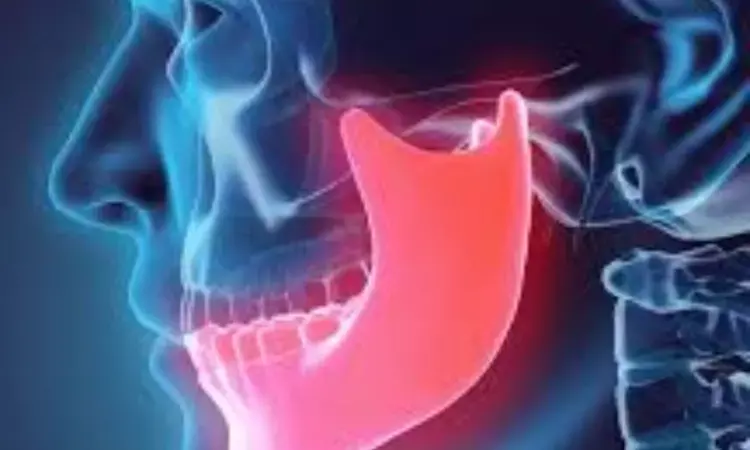- Home
- Medical news & Guidelines
- Anesthesiology
- Cardiology and CTVS
- Critical Care
- Dentistry
- Dermatology
- Diabetes and Endocrinology
- ENT
- Gastroenterology
- Medicine
- Nephrology
- Neurology
- Obstretics-Gynaecology
- Oncology
- Ophthalmology
- Orthopaedics
- Pediatrics-Neonatology
- Psychiatry
- Pulmonology
- Radiology
- Surgery
- Urology
- Laboratory Medicine
- Diet
- Nursing
- Paramedical
- Physiotherapy
- Health news
- Fact Check
- Bone Health Fact Check
- Brain Health Fact Check
- Cancer Related Fact Check
- Child Care Fact Check
- Dental and oral health fact check
- Diabetes and metabolic health fact check
- Diet and Nutrition Fact Check
- Eye and ENT Care Fact Check
- Fitness fact check
- Gut health fact check
- Heart health fact check
- Kidney health fact check
- Medical education fact check
- Men's health fact check
- Respiratory fact check
- Skin and hair care fact check
- Vaccine and Immunization fact check
- Women's health fact check
- AYUSH
- State News
- Andaman and Nicobar Islands
- Andhra Pradesh
- Arunachal Pradesh
- Assam
- Bihar
- Chandigarh
- Chattisgarh
- Dadra and Nagar Haveli
- Daman and Diu
- Delhi
- Goa
- Gujarat
- Haryana
- Himachal Pradesh
- Jammu & Kashmir
- Jharkhand
- Karnataka
- Kerala
- Ladakh
- Lakshadweep
- Madhya Pradesh
- Maharashtra
- Manipur
- Meghalaya
- Mizoram
- Nagaland
- Odisha
- Puducherry
- Punjab
- Rajasthan
- Sikkim
- Tamil Nadu
- Telangana
- Tripura
- Uttar Pradesh
- Uttrakhand
- West Bengal
- Medical Education
- Industry
Postoperative Rehabilitation demonstrated preventive role against relapse after osseous temporomandibular joint ankylosis surgery: Study

A new study published in the journal of BMC Oral Health showed that during the unusually long clinical follow-up period of 24 months, postoperative rehabilitation was found effective for prevention of recurrence following TMJA surgery.
Temporomandibular joint ankylosis (TMJA) is a disorder in which the temporomandibular joint (TMJ) becomes permanently stuck in a forced position due to an intracapsular lesion, resulting in significantly reduced mandible motion. As a result, not only severe trismus, but also masticatory function and facial deformities might impair aesthetics in afflicted people.
TMJA is classified into fibrous ankylosis and bony ankylosis, with the latter frequently causing a severe condylar dysfunction and impairing quality of life (QOL). Gap arthroplasty (GA), which involves excising any bony adhesion between the joint space and mandibular condyle without inserting it into the resulting gap, and interpositional gap arthroplasty (IPG), which involves creating a gap and then inserting an artificial material or temporalis myofascial flap (TMF) for example, are two related surgical procedures that have been reported.
The goal of surgical therapy for TMJA is to improve patient quality of life by reducing ankylosis, restoring condylar function, avoiding ankylosis recurrence, and enhancing facial attractiveness. Thus, this study sought to clarify and analyze the association between the operational method, the rehabilitation time, and maximum incisal opening (MIO), with an emphasis on mouth opening following surgical treatment for TMJA.
12 patients who had surgery for gap or interpositional arthroplasty were included. The course of maximal incisal opening in patients was split by surgical procedure, gap size, and rehabilitation duration, with a focus on relapse of maximal incisal opening. The average recurrence of maximum incisal opening following surgery in patients with a gap size ≥ 15 mm was 12.0 ± 11.2 mm, whereas in those with a gap size < 15 mm was 8.9 ± 12.6 mm.
The average relapse of maximum incisal opening following surgery in patients with gap arthroplasty was 12.3 ± 7.6 mm, whereas those with interpositional arthroplasty was 7.5 ± 15.2 mm. After surgery, patients with less than 12 months of rehabilitation had an average relapse of 14.1 ± 10.7 mm, whereas those with more than 12 months had an average recurrence of 7.4 ± 16.3 mm.
Overall, the findings of this retrospective study over a relatively long clinical follow-up period of 24 months demonstrate the relevance of postoperative rehabilitation in avoiding recurrence following TMJA surgery.
Source:
Ezoe, Y., Nogami, S., Otake, Y., Chiba, M., Takahashi, T., & Yamauchi, K. (2025). Clinical course of jaw function recovery following surgical treatment in patients with temporomandibular joint ankylosis- correlation with mouth opening rehabilitation. BMC Oral Health, 25(1), 423. https://doi.org/10.1186/s12903-025-05806-9
Neuroscience Masters graduate
Jacinthlyn Sylvia, a Neuroscience Master's graduate from Chennai has worked extensively in deciphering the neurobiology of cognition and motor control in aging. She also has spread-out exposure to Neurosurgery from her Bachelor’s. She is currently involved in active Neuro-Oncology research. She is an upcoming neuroscientist with a fiery passion for writing. Her news cover at Medical Dialogues feature recent discoveries and updates from the healthcare and biomedical research fields. She can be reached at editorial@medicaldialogues.in
Dr Kamal Kant Kohli-MBBS, DTCD- a chest specialist with more than 30 years of practice and a flair for writing clinical articles, Dr Kamal Kant Kohli joined Medical Dialogues as a Chief Editor of Medical News. Besides writing articles, as an editor, he proofreads and verifies all the medical content published on Medical Dialogues including those coming from journals, studies,medical conferences,guidelines etc. Email: drkohli@medicaldialogues.in. Contact no. 011-43720751


